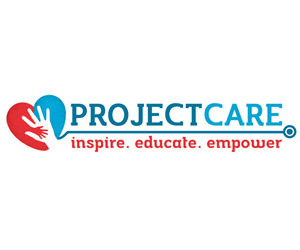 Parents often ask me about advice on what can help their autistic children. I am not an autism expert but I believe that some things might have worked for my own personal situation as a child. Here are my nine tips:
Parents often ask me about advice on what can help their autistic children. I am not an autism expert but I believe that some things might have worked for my own personal situation as a child. Here are my nine tips:
1) Use a spartan therapy room: In contrast to a room filled with sensory stimulation, I feel I might have functioned better in a room with minimal distractions that forces me to focus on the task at hand. So, how can you make this happen for your child?
- Soundproof the room and cover the windows.
- Cover the walls and floor with a uniform soft colour that has no patterns, shapes or lines.
- Constantly play gentle, calming music such as Baroque music.
- Keep a minimum amount of furniture (e.g. a small table, cushions, a storage cupboard and a sleeping mattress). Avoid unnecessary decorations such as photos and artwork. Items in the room should blend in rather than contrast with the background colour.
- Use only non-flickering lights such as LEDs and halogen lamps, instead of fluorescent lighting as the flicker from fluorescent lighting may cause discomfort and irritation to some children.
- Check for odours and other sensory stimuli; avoid anything that may draw attention towards it. For instance, a shiny piece of metal reflecting sunlight or perfume worn by a parent can be quite distracting.
2) Do self-awareness exercises: A full-length mirror could have been used to help me become aware of my body and behaviour. A voice recorder could also have helped me become more aware of what my own voice sounded like. I did not notice that I had issues with how I behaved and expressed myself, for instance mumbling instead of speaking clearly to others. Such issues often lead to communication and social difficulties as well as bullying.
3) Explore alternatives: Waldorf education (also known as Steiner education) (its pedagogy emphasises the role of imagination in learning, striving to integrate holistically the intellectual, practical and artistic development of students) and the Miller Method (addresses children with autism’s body organisation, social interaction, communication and representation issues in clinical and classroom settings) might have helped me to connect with my own instincts. These two can complement other treatment or intervention efforts.
4) Check for allergies and restrict diet accordingly: I used to suffer from allergies (e.g. persistent runny nose, bloated stomach and asthma attacks). A casein and gluten-free diet might have helped me. Casein is found in milk and gluten in wheat, oat, rye and barley.
5) Check for medical issues and treat them: I also had nutritional deficiencies, a weak digestive system and chronic fatigue that I eventually fixed by myself with nutritional supplements. I have also read that heavy metal poisoning and yeast infection of the gut can create behavioural issues.
6) Use the Picture Exchange Communication System (PECS), which allows those with little or no communication abilities to communicate using pictures: I would have found it easier to express myself. To illustrate saving money, you can make your own version – download clipart from Google images, organise and print these clipart from PowerPoint, cut them out and then laminate these pieces.
7) Keep track of events and tasks using a journal: I eventually discovered this method by myself to write down things that I needed to do in the same place so I could remember to do them. This helped me tremendously and I still do so today.
8) Do talent development: I was very interested in science and computers. I was already reading university textbooks in primary school and learned programming myself when I received my first computer. However, my parents failed to capitalise on these to develop talents that could have given me an advantage in my adult life. So watch out for what talents your children have.
9) Caregivers take care too: My parents had personal issues that made my life difficult. I have developed my own life coaching system at http://rainbowhuman.com that I wish to share with parents for their own use as well as to teach their children. It is a way to use “releasing statements” to begin freeing one’s true self.
Eric (who prefers not to reveal his surname) is a 35-year-old Singaporean working in an IT-related job. He was diagnosed with autism in 2001 before he graduated from his polytechnic. Without the help of any therapy, he has found his own way to solve the issues that come with his unique life situation. He has written three books including one called “Star Child on Earth: Life with Autism & Beyond”. He is looking at penning a series of books to inspire humanity, as well as developing a new career as a life coach.













